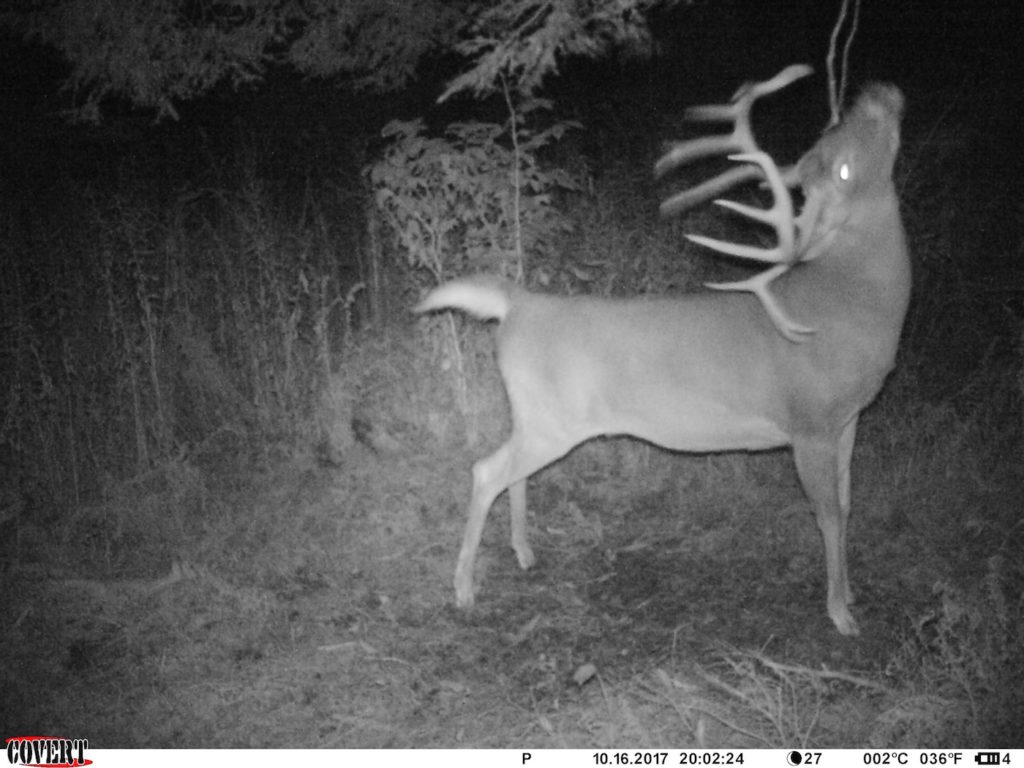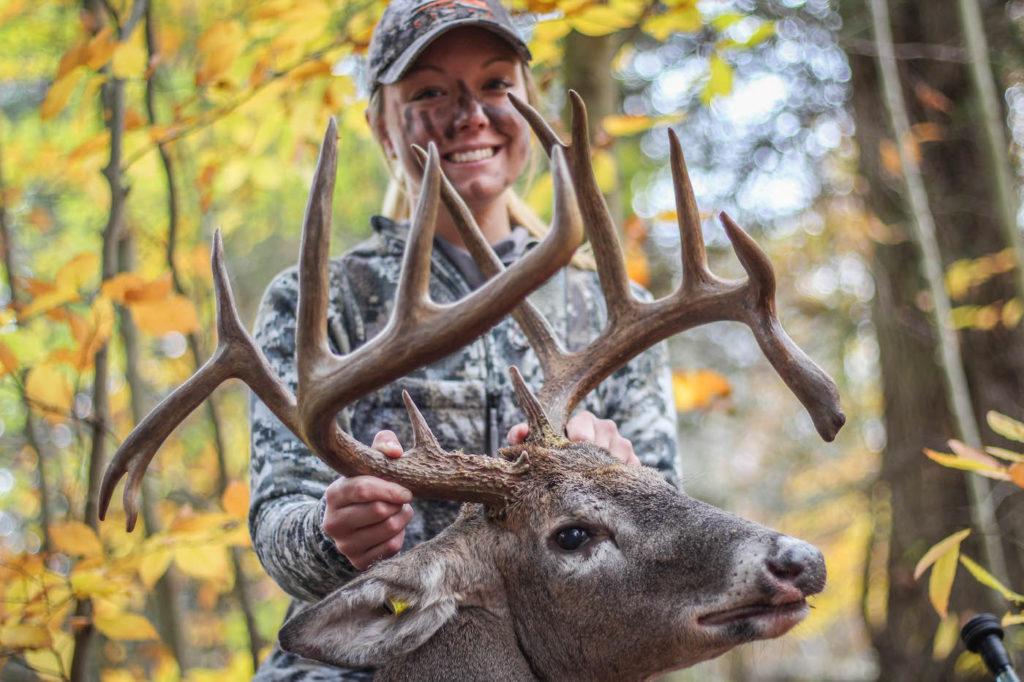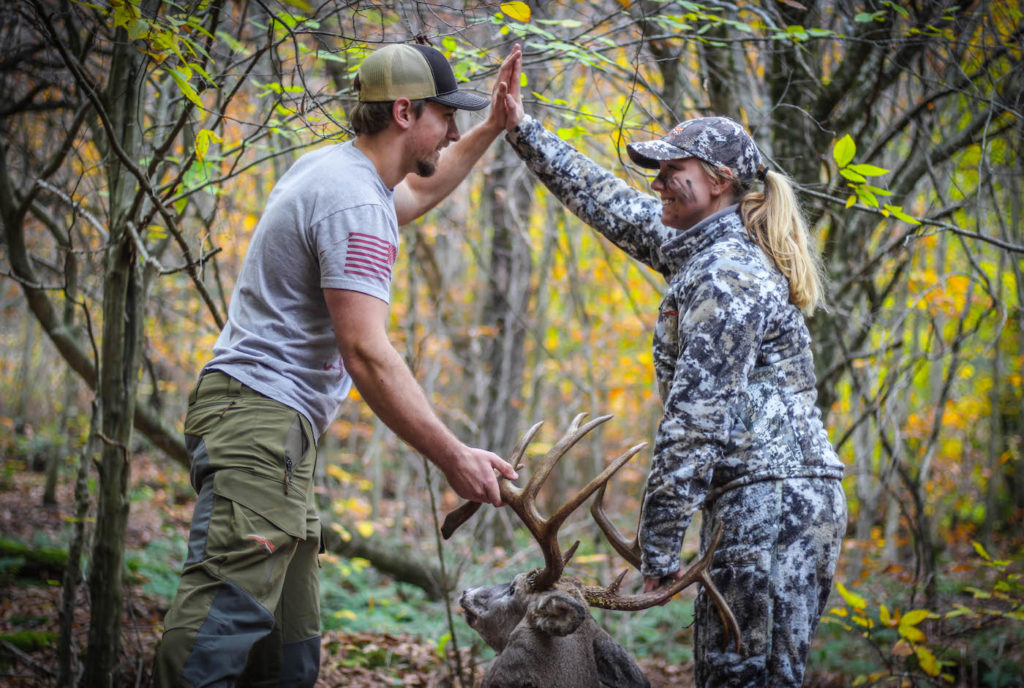As I sit here sipping on a hot cup of coffee, I am reflecting back on what has been the most memorable Appalachian whitetail bowhunting season to date. Every year, us whitetail hunters can’t wait until the leaves turn brown, the warm days give way to frosty mornings, and the big-bodied mountain bucks are full of adrenaline and hormones. My annual “rutcation” was filled with action like we’ve never experienced, including the fall of a legendary buck and a grind until the end. In last month’s Destinations column, I gave an overview of what it’s like to hunt the deer that roam the Appalachian Mountains of the eastern United States. Now that the archery season has ended here in Pennsylvania, I want to discuss the specific tactics I used to take a Boone & Crockett deer at the beginning of the marathon that is better known as the rut.
Searching For a Ghost
After the 2016 archery season ended in Pennsylvania, Jessie Donachy (my girlfriend) and I were pulling all our trail cameras out of the woods before the rifle season began. When I put the 8 gigabyte SD card into my computer, it changed our lives for the next year. Were our eyes deceiving us? Or was there really a giant, chocolate-racked mountain whitetail with a big drop tine projecting from his left main beam? On a Saturday morning in late October, the buck, which we started calling Choco due to his dark chocolate rack, made his way in front of my trail camera on a main trail. Deer of this caliber are as rare as they come in this part of Pennsylvania, with no agricultural fields or food plots within miles. With the buck only showing up once to the area, it was certain that he was coming from somewhere else. Throughout the winter months, I studied topo maps of the area and circled areas within a couple of miles to begin the search for his bedroom. Once the snow melted, allowing us to see the sign from last year’s rut in the form of rubs and scrapes, we put the boots on the ground. Jessie and I logged over a hundred miles in my GPS this past spring in search of Choco’s sheds and other sign of where he was spending the majority of his time.
During the spring scouting season, we came upon a section of a bottom that had all the components to indicate a big deer might live there. It was thick with hemlock trees with beaver ponds throughout. It wasn’t long before we noticed the large rubbed trees and beaten-down scrapes. Then, there was the big bed I had been looking for. You may wonder how you can tell which beds belong to certain deer. To be honest, it’s a lot more speculation than certainty. With the oversized rubs and scrapes in the vicinity, I had a good feeling that this was Choco’s home during the fall months, even though it was a mile away from where we had the photos of him. Roughly 80 yards from this bed was a hemlock tree with multiple, immense scrapes underneath it. With a beaver pond to my back, trails crossing the creek entering the hemlock thicket, and multiple valleys leading to this point, this was going to be our best bet during late October.
Execution of a Plan
The leaves had begun to fill with fiery red pigment, and the winds were getting cooler every day. This could only mean one thing – archery season in Pennsylvania. Jessie and I hiked in towards the hemlock tree that we found in the spring and hung a trail camera on. I had the stand on my back with high anticipation of what we were about to see when we pulled the card. As soon as we crossed the small stream, a rub the size of my thigh was shining underneath the thick hemlock cover. In a matter of seconds, we were scrolling through the photos of the trail camera that was located nearby. It didn’t take long before we were able to see the unmistakable antlers of Choco. Not only did he have the same drop tine, but he had a seven-inch kicker coming off his right G2 this year. He was there at night, but only an hour after dark, and he was coming from the bedding area that we identified in the spring.
Looking ahead at the weather, October 25th was going to be the day that we needed to hunt him. There was a decrease in temperature by more than 20 degrees, which is what I was hoping would have him on his feet just a little longer in the morning before returning to bed. With the calendar closing in on November, he should be beginning to search for the first available doe to come into estrus. The temperature would be around 32 degrees Fahrenheit, which would have the thermals going straight up for a few hours before the dominant southwest wind would take over.
On the morning of October 25th, Jessie hiked in by herself and slipped into the stand over an hour before the first sign of light. It was a cold, calm morning, without much movement. Finally, at 9:30 am, a body emerged from the west. A dark, chocolate-antlered mountain buck was heading back towards the bedding area and freshening up his scrapes along the way. She couldn’t believe that he had appeared just as we’d hoped. He was moving in a direction that wouldn’t present Jessie with a shot when she let out some deep grunts that brought him in on a string, grunting the entire way.
At twelve yards she released an arrow. The arrow hit a branch, careening over the deer’s back. He ran out to 25 yards, turned and looked at her. She was able to get another arrow on the string and get a second shot. This time the arrow hit its mark and he ran 60 yards before taking his last breath. Getting the call from Jessie as her first buck with a bow fell in front of her will be etched in my mind forever. I am glad that I was able to get there shortly after the recovery to celebrate the life of this warrior and all of the work that went into this. The old mountain buck had 14 points and unofficially scored 176 7/8”.
Key Tactics:
Buck Bedding Area – We located the primary buck bedding area for this time of year. It was an overlooked spot that looked to have little to no human interference. Specific beds seem to change frequently in the Appalachian Mountain region. When you find a bedding area being used by a mature buck, you might not want to wait too long to strike.
Cold Front – When the weather drops 20 degrees or more in the latter part of October, I will do whatever it takes to be in a tree stand. This cold front made the old mountain buck stay on his feet longer than normal, returning to his bed a few hours after daylight.
Pre-Rut – The pre-rut in late October can be one of the best times to kill the oldest deer. They want to try to find the first available doe that comes into estrus. Combine this time of year with a cold front and you may get the opportunity you’ve been looking for, as Jessie did on October 25th.
Creek Bottom Travel Route – Not only was this my typical rut creek bottom setup, but I love when I can use a beaver pond or open field to funnel the deer and blow my scent into. Multiple steep valleys met at this point, which created a natural terrain funnel through the area.
Blind Calling – I believe in being aggressive with calling during the pre-rut and rut time frames, even on public land. I’ve read a lot about staying away from calling blindly without any deer in sight, because of the chance of spooking them. In a situation where you’re in thick cover, I like to call every 15-20 minutes hoping to catch the attention of a buck out of sight. Jessie was grunting prior to the appearance of the buck, and used a deep, fighting grunt to bring him in close.





